Science News

Dec 24th, 2025 - Long before flowers dazzled insects with colors, ancient plants used a different signal. We tend to think of plants as passive, vulnerable actors. But in their partnership with insects, it's plants that often play the leading role. Sometimes, this ... [Read More]
Source: zmescience.com

Dec 24th, 2025 - It's quick and easy to access Live Science Plus, simply enter your email below. We'll send you a confirmation and sign you up for our daily newsletter, keeping you up to date with the latest science news. Facebook X Whatsapp Reddit Flipboard Join ... [Read More]
Source: livescience.com

Dec 24th, 2025 - It's quick and easy to access Live Science Plus, simply enter your email below. We'll send you a confirmation and sign you up for our daily newsletter, keeping you up to date with the latest science news. Facebook X Whatsapp Reddit Flipboard Join ... [Read More]
Source: livescience.com

Dec 24th, 2025 - A new theory of "dark photons" attempted to explain a centuries-old experiment in a new way this year, in an effort to change our understanding of the nature of light A core tenet of quantum theory was imperilled this year when a team of ... [Read More]
Source: newscientist.com

Dec 24th, 2025 - How centuries of human pressure quietly reshaped a rare brown bear Bears are one of the big victims of deforestation. As more and more forests get cut down, bears keep retreating to remote corners, keeping their distance from people. In a small stretch of central Italy, however, bears have followed a different path. A new genetic study suggests that Apennine brown bears have gradually become less aggressive over thousands of years of living alongside people. Rather than retreating entirely from human activity, this isolated population appears to have adapted to it. The research, published in ... [Read More]
Source: zmescience.com

Dec 24th, 2025 - A star is born out of a giant cloud of gas and dust collapsing under its own gravity. As gravity pulls the gassy material inwards, some material is left swirling around the star. Over time, the momentum of the spinning material flattens it into the ... [Read More]
Source: greenmatters.com
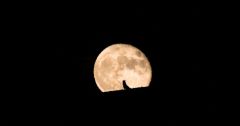
Dec 24th, 2025 - Picture the cosmos as a grand fashion show and the celestial objects as models walking in their orbits. As moments pass, every model changes its costumes depending on its positioning and other factors. Earth's satellite, the Moon, is the finest ... [Read More]
Source: greenmatters.com

Dec 24th, 2025 - Follow Earth on Google Planets do not show up fully formed. They grow inside thick disks of gas and dust that hide almost everything. For years, that mess has blocked a clear view of how solar systems take shape. Astronomers knew the basics, but ... [Read More]
Source: earth.com

Dec 23rd, 2025 - With the holidays and the new year here, you want your refrigerator to function properly. If you've been having issues with your unit (leaking water all the time or making a noise), you may be wondering if you have to get a new one. If your ... [Read More]
Source: cnet.com

Dec 23rd, 2025 - 'Stingraybot' uses microbubble muscles controlled by ultrasound While it might sound like a weapon of oceanic destruction in the hands of Aquaman's arch enemies, the new "stingraybot" from a team at ETH Zurich (the Federal Institute of Technology of Switzerland) offers enormous promise for surgery, medical care, wildlife biology, robotics, and more, thanks to muscular membranes of microbubbles. At a mere 4 cm (1.6 inches) in width, the stingraybot swims using the same wavelike motions of the wing-like pectoral fins of real stingrays. Even more remarkably, this tiny ichthyo-droid requires no ... [Read More]
Source: newatlas.com

Dec 23rd, 2025 - The 12 best things to do in Alexandria, Egypt - Lonely Planet . Alexander the Great spotted the potential of its deep harbor and founded his Egyptian capital here, creating a bridge between the land of the pharaohs and ancient Greece. In the end, ... [Read More]
Source: lonelyplanet.com

Dec 23rd, 2025 - Reading time 3 minutes A NASA safety panel has criticized space agency officials for how they handled the busted Starliner mission that left two astronauts stranded on board the International Space Station (ISS). A new report highlights a wave of ... [Read More]
Source: gizmodo.com
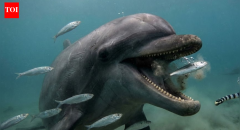
Dec 23rd, 2025 - For most people, dolphins sit in a safe mental category: intelligent, playful, sociable animals better known for aquarium tricks and beachside encounters than for anything genuinely threatening. They do not carry the menace of sharks or the ... [Read More]
Source: timesofindia.indiatimes.com

Dec 23rd, 2025 - When the James Webb Space Telescope (JWST) launched on Christmas Day 2021, astronomers hoped it would revolutionise our understanding of the early stages of the Universe. And they were right. Almost as soon as the telescope was switched on, ... [Read More]
Source: sciencefocus.com

Dec 23rd, 2025 - Follow Earth on Google An embryo doesn't just drift into place and hope for the best. Almost immediately, it starts talking to the uterus. In a new study from the Hebrew University of Jerusalem (HUJI), scientists watched this conversation unfold in real time and found that it begins far sooner than expected – within about an hour. Using lab-grown models of early embryos and uterine lining cells, the team tracked a rapid back-and-forth of molecular messages that help decide whether attachment will succeed. Those messages travel in tiny membrane packages, shuttling fats, metabolites , ... [Read More]
Source: earth.com

Dec 23rd, 2025 - Follow Earth on Google Young star systems, like nearby Fomalhaut, are messy places. Rocks slam together and icy bodies shatter. Dust fills the space where solid objects once moved quietly along. This chaos is how planets are built, but it usually plays out far from view and over very long stretches of time. That is why Fomalhaut has scientists buzzing. In just 20 years, astronomers have seen the dusty aftermath of two massive space collisions around this star. These events are rare, according to long-standing models. Seeing two impacts so close together raises a simple question: Are we very ... [Read More]
Source: earth.com
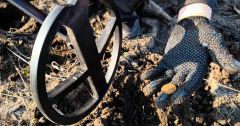
Dec 23rd, 2025 - Until around the middle of the third century BC, Celtic people mostly carried out their everyday transactions using a barter or payment-in-kind system. They exchanged items like grains, textiles, metalware, salt, small properties, gold rings, iron bars, bell-shaped tokens, or animals for buying food and essentials. But then, something shifted. The Celtic warriors who ventured out into Greece to fight battles found something that dramatically reconstructed the Celtic economy. These warriors would come back home bringing the idea of money with the wages they were paid for fighting in Greece. ... [Read More]
Source: greenmatters.com
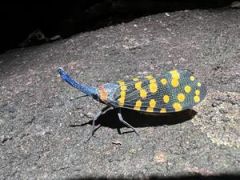
Dec 23rd, 2025 - According to a team of researchers from the University of Arizona, new species are being discovered at a faster rate than ever before, one that far exceeds extinction University of Arizona About 300 years ago, Swedish naturalist Carl Linnaeus set out on a bold quest: to identify and name every living organism on Earth. Now celebrated as the father of modern taxonomy, he developed the binomial naming system and described more than 10,000 species of plants and animals. Since his time, scientists have continued to describe new species in the quest to uncover Earth's biodiversity. According to a ... [Read More]
Source: eurekalert.org

Dec 22nd, 2025 - By Archaeologists searching a field in Poland came across a remarkably rare, 600-year-old brass seal which depicts a local saint, per Popular Mechanics . St. Catherine of Alexandria was a patron saint of a church in the Braniewo region of Poland and a symbolic figure for the local militia. Archaeologists discovered the remarkably well-preserved seal while surveying a farmer's property in the region. St. Catherine is depicted holding a sword aloft, symbolizing her martyrdom. Along the flat front side of the seal is Gothic script, while the raised backside provides a hole which would have ... [Read More]
Source: miamiherald.com
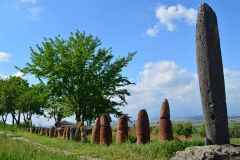
Dec 22nd, 2025 - These giant monuments are 1,000 years older than Stonehenge and share an interesting connection with water. Scattered across Armenia's highest mountains are giant carved stones that seem wildly out of place. Some stand taller than a two-storey building, yet none of these mysterious vishaps or dragon stones sit near known archaeological sites such as ancient villages. Archaeologists have struggled to explain why, 6,000 years ago, people dragged these giant monuments into frozen, harsh, high-altitude terrain—often above 2,700 meters—where snow limits human activity to just a ... [Read More]
Source: zmescience.com